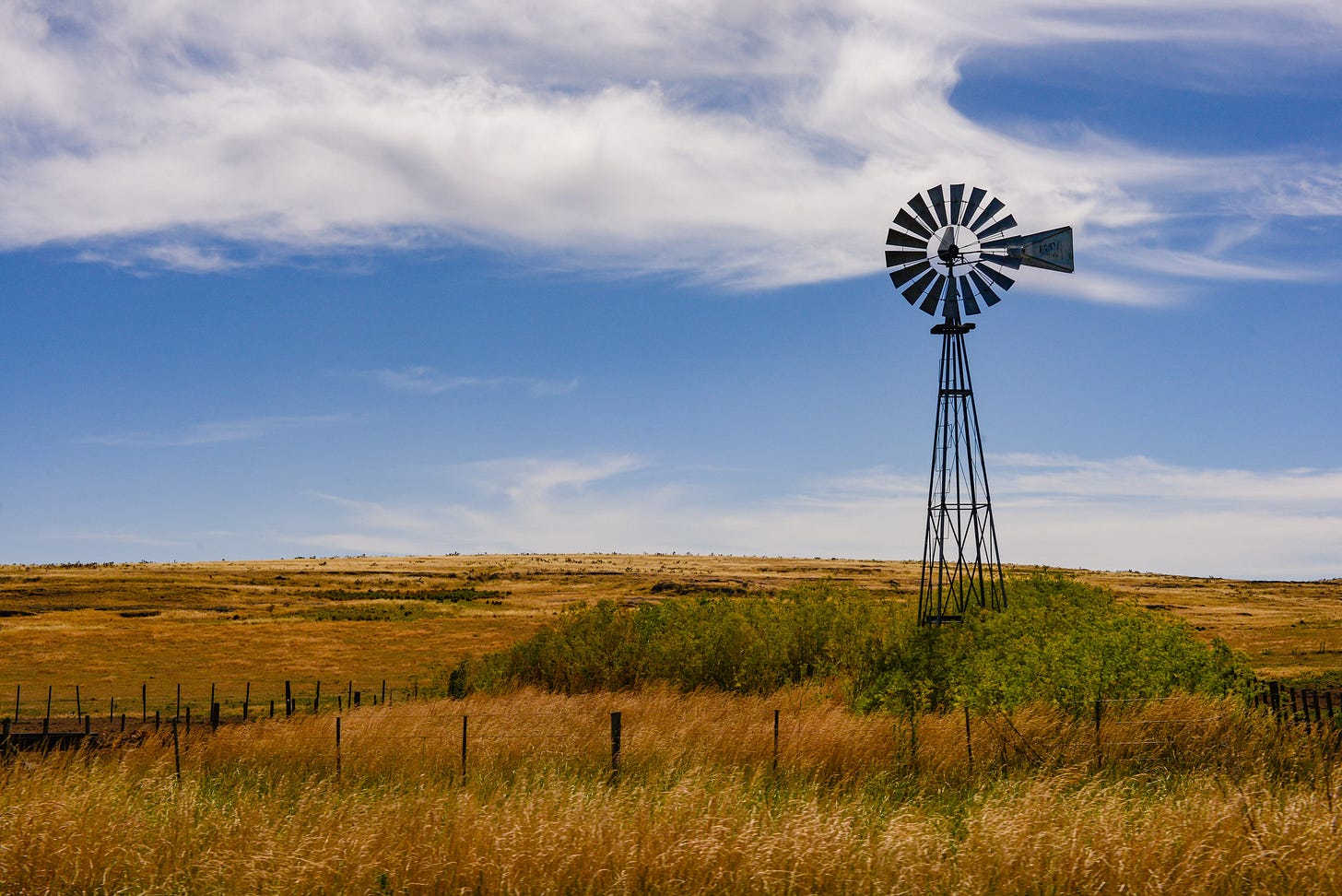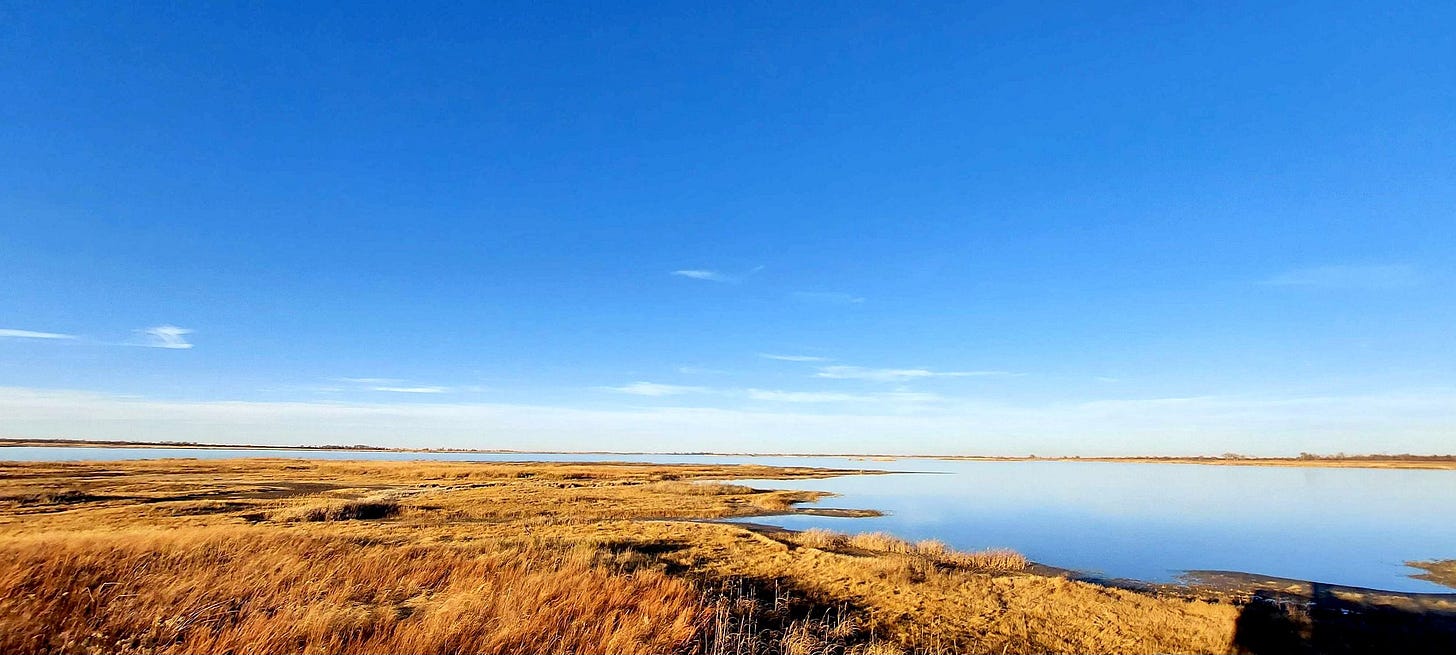The Rattlesnake Reckoning: How Federal Plans Could Seize Land, Water—and Liberty
Kansas Farmers Fight Back as Federal Conservation Plan Threatens Land and Water Rights Through Eminent Domain
“This isn’t just a water management issue. It’s a full-blown federal overreach—an unlawful and fiscally reckless plan to take private property and repurpose public funds to correct a problem created by the federal government.” Tracey Barton – Executive Director, Kansas Natural Resource Coalition
A Watershed Crossroads: Local Voices Emerge
On April 18, 2025, the NRCS unveiled the Draft Environmental Impact Statement (DEIS) for the Rattlesnake Creek Watershed Plan—a sweeping federal conservation initiative targeting Kansas farmers and ranchers across the central plains. The proposal calls for the construction of a new augmentation wellfield and the retirement of water rights to restore streamflow into the Quivira National Wildlife Refuge, which holds a senior water right. But for farmers and county officials, one chilling sentence buried deep in the DEIS shifted the tone of the entire project:
“If landowners do not voluntarily cooperate, eminent domain may be used to seize property.”
The reaction was swift and fierce. What had once been pitched as a voluntary conservation effort now looked like a land and water grab—one with potentially devastating consequences for private landowners.
Online, residents began to voice their outrage. In a widely shared Facebook post, a Kansas farmer wrote, “This plan was developed mainly by irrigators in the western Rattlesnake watershed to save their irrigating water rights. The heart of our farm is in this basin…” Another resident, posting in a Reno County community group, confessed, “This is something I hadn’t heard about until now. I thought the water augmentation was on a willing seller basis, but it seems more threatening than I expected.” The High Plains Journal’s post about the plan drew dozens of similar comments, with one user declaring, “This is beyond outrageous. The government mismanages water and now wants to take our land to fix their screw-ups.”
These reactions underscore a growing rift between rural Kansans and the agencies claiming to serve them. Trust has been broken—and the fight for water has become a fight for freedom.
The Federal Fumble: Mismanagement Before Takeover
The problems facing the Rattlesnake Creek watershed didn’t arise from reckless farmers or overzealous irrigation. They are, at their core, the product of years of bureaucratic failure and federal neglect.
At the heart of the issue is crumbling infrastructure. The U.S. Fish & Wildlife Service (USFWS) and the Natural Resources Conservation Service (NRCS)—the very agencies now proposing eminent domain—were responsible for constructing and maintaining the canal and diversion systems that feed water into Quivira. Yet for decades, those systems have fallen into disrepair. Leaky, unlined canals, broken diversion gates, and overgrown ditches have caused massive losses in streamflow due to seepage and evaporation. Instead of investing in repairs or upgrades, the agencies now seek to condemn private land and water rights to make up the difference.
Meanwhile, Kansas farmers have operated under a water law system that allowed—and in some cases encouraged—unsustainable groundwater pumping. The Ogallala Aquifer, which underpins much of central Kansas agriculture, has experienced significant drawdown, not because of malice, but because the state failed to adequately regulate junior water rights even after impairment complaints were filed. Despite repeated confirmation from the Kansas Division of Water Resources that Quivira's senior rights were being harmed, little was done to correct course. Regulators chose delay over enforcement.
This isn’t to say local farmers were unwilling to help. In fact, they already have. Back in 1994, a cooperative alliance between landowners, water districts, USFWS, and other stakeholders began voluntary conservation efforts that brought short-term success. More recently, in 2023, a voluntary effort restored more than 325,000 gallons of water to Quivira—enough to satisfy interim flow targets without coercion or lawsuits. These community-led programs demonstrated that non-coercive solutions can work. But instead of supporting or expanding these efforts, the DEIS largely ignores them, presenting property seizure as a primary path forward.
KNRC has strongly objected to this approach. In their formal filing, the coalition argues that the plan fails to explore non-invasive alternatives, such as repairing federal infrastructure or incentivizing voluntary retirement of water rights. Worse, it bypasses legal obligations like a takings analysis—required under both Kansas statute and federal Executive Order 12630. The coalition sees this not just as bad policy but as a fundamental violation of due process.
“The DEIS fails to address root causes and proposes to solve federal mismanagement by taking from private citizens,” says KNRC President Bob Rein.
33 Counties Push Back
That sentiment is shared by dozens of county governments. The Kansas Natural Resource Coalition, representing 33 counties across central and western Kansas, has taken a formal stand against the DEIS. Their 24-page response outlines a range of legal and ethical concerns, starting with the absence of a constitutionally required takings impact analysis. Under both Kansas law and federal executive authority, any plan that includes eminent domain must assess its potential violation of private property rights. The DEIS fails to do so.
Equally troubling is the plan’s disregard for less-intrusive solutions. KNRC and local water boards have long advocated for canal restoration, updated water accounting, and improved irrigation technology—yet none of these receive serious attention in the federal proposal. Finally, the coalition argues that the plan undermines Kansas sovereignty by imposing federal water policy on local communities already working to find balance.
As Rein puts it, “The federal government is trying to fix its own mistakes by taking private land and water—not by fixing old canals.”
Eminent Domain: A Legal Weapon
While the DEIS frames its intentions as cooperative, the language within the document makes it clear that eminent domain is not a last resort—it’s a planned mechanism. In Kansas, water rights are treated as real property. That means if the government chooses to seize land under this plan, it could also revoke a farmer’s right to irrigate, pump, or access long-held water sources.
This level of control not only threatens agricultural viability—it sets a dangerous legal precedent. If federal agencies can override state water law and private contracts under the banner of conservation, what stops future land seizures under climate policy, biodiversity targets, or other environmental objectives?
Legal experts warn that this case may become a bellwether for property rights across the country. If allowed to proceed, it could redefine the limits of federal power over rural communities.
A Better Path Forward
There is a better way—one that doesn’t require force. Experts and local leaders alike have pointed to solutions that begin with infrastructure, not confiscation. Fixing and modernizing the existing canal systems would reduce water loss significantly, especially during peak flow months. Unlined ditches that leak millions of gallons each season could be upgraded with concrete or pipe systems, dramatically improving efficiency.
Additionally, voluntary programs like water banks and localized conservation districts have already proven effective. With proper funding, these efforts could be expanded—building on trust, not eroding it. Rather than centralize power in Washington, a renewed commitment to local collaboration could restore balance between water use and environmental stewardship.
Most importantly, this approach respects property rights and Kansas sovereignty. It offers a future built on cooperation, not coercion.
Liberty vs. Bureaucracy
This isn’t just about hydrology—it’s about the limits of government power. The Rattlesnake Creek Watershed Plan raises foundational questions: Can the federal government use environmental regulation to bypass property laws? Will farmers be forced to surrender land that’s been in their family for generations? And what precedent does this set for other rural communities across the nation?
For the landowners of central Kansas, this fight is personal. It’s not about opposing conservation. It’s about protecting the right to steward their land without the looming threat of seizure.
What’s Next?
Although the public comment period closed in early June, hearings and legal proceedings are still ahead. The KNRC has signaled that it’s prepared to escalate the issue in court, and county commissioners across the region are organizing public forums to educate landowners and build grassroots resistance.
“We’re not backing down,” says Bob Rein. “This is about protecting our way of life, our land, and our right to manage it without federal coercion.”
Stay Informed
Yanasa TV is committed to covering this story as it unfolds. Our team will travel to Stafford, Reno, and Rice Counties to meet with farmers, county leaders, and affected families. We will publish legal explainers, analyze the constitutional questions raised by the DEIS, and highlight the voices of those on the ground.
Our mission is to shine light on this quiet conflict before it becomes a national precedent—and to remind America that the defense of property rights is still a battle worth fighting.
USDA NRCS – Rattlesnake Creek Watershed DEIS
https://www.nrcs.usda.gov/state-offices/kansas/news/rattlesnake-creek-watershed-draft-plan-environmental-impact-statementHigh Plains Journal – Rattlesnake Creek Watershed Proposal Alarms Kansas Counties
https://hpj.com/2025/06/18/rattlesnake-creek-watershed-proposal-alarms-kansas-counties/Federal Register – Notice of Intent to Prepare an Environmental Impact Statement
https://www.federalregister.gov/documents/2023/12/28/2023-28592/notice-of-intent-to-prepare-an-environmental-impact-statement-for-the-rattlesnake-creek-watershedKansas Department of Agriculture – Quivira National Wildlife Refuge Impairment Complaints
https://www.agriculture.ks.gov/divisions-programs/division-of-water-resources/water-appropriation/impairment-complaints/quivira-national-wildlife-refugeKansas Reflector – Kansas Farm Irrigation Still Hinders Quivira National Wildlife Refuge Water Rights
https://kansasreflector.com/2023/08/24/kansas-farm-irrigation-still-hinders-quivira-national-wildlife-refuge-water-rights/Western Kansas Research Extension Center – Rattlesnake Creek/Quivira Partnership Archive
https://www.wkrec.org/programs/irrigation_engineering/archive/rattlesnakecree_quivira.htmlFarm Progress – Progress on the Rattlesnake Creek Basin
https://www.farmprogress.com/conservation-and-sustainability/progress-on-the-rattlesnake-creek-basinExecutive Order 12630 – Governmental Actions and Interference with Constitutionally Protected Property Rights
https://www.archives.gov/federal-register/codification/executive-order/12630.htmlKansas Statute K.S.A. 77-701 – Takings Impact Assessment
https://www.kslegislature.org/li/b2023_24/statute/077_000_0000_chapter/077_007_0000_article/077_007_0001_section/077_007_0001_k/X (formerly Twitter) – American Stewards of Liberty and High Plains Journal Posts
https://twitter.com/ASL_Liberty
https://twitter.com/HighPlainsJrnl





